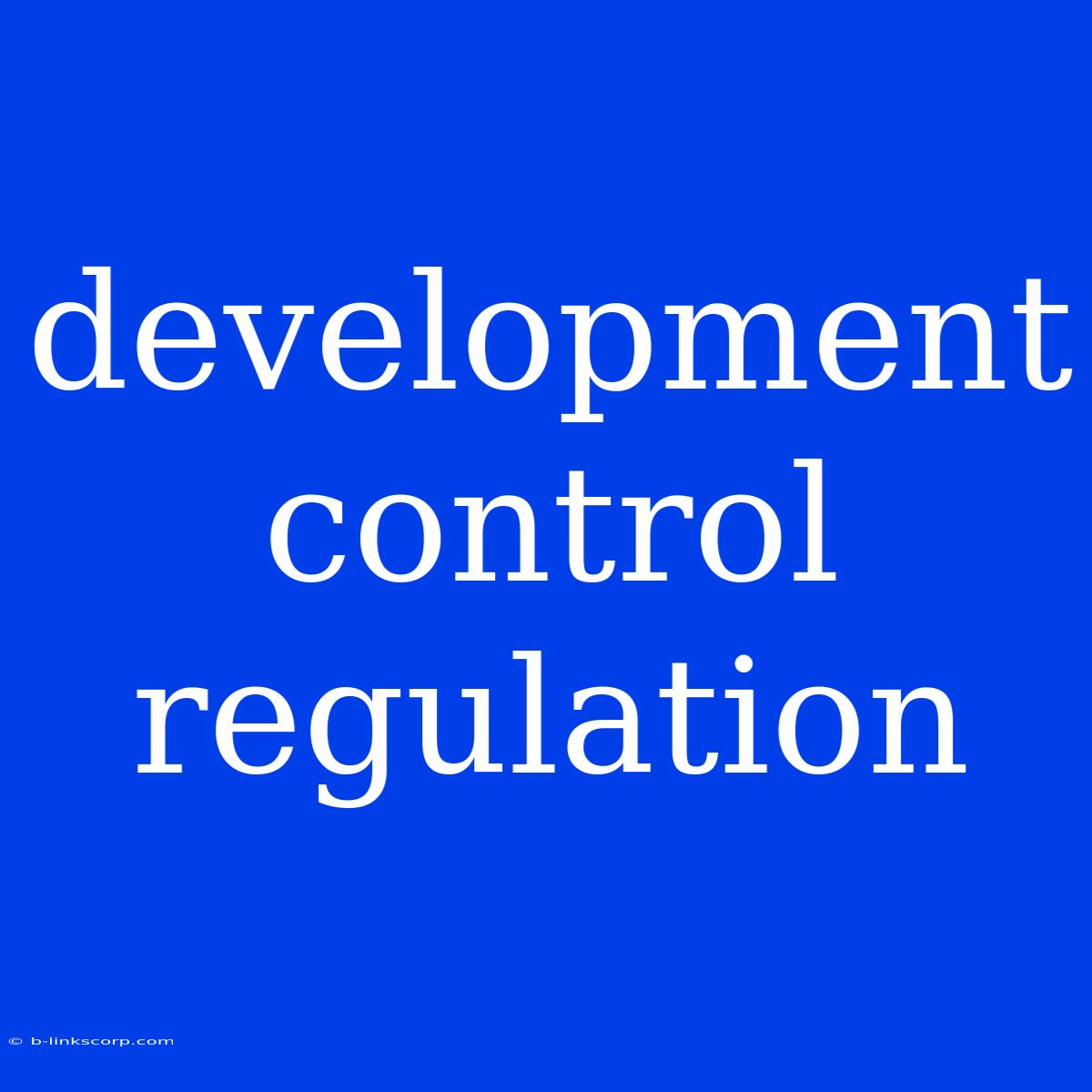Development Control Regulations: Shaping Sustainable Growth and Protecting the Environment
Development control regulations, often referred to as planning regulations, are a set of rules and policies implemented by local authorities to guide and manage the development of land and property within their jurisdiction. These regulations aim to ensure that development occurs in a sustainable and responsible manner, protecting the environment, preserving local character, and enhancing the quality of life for residents.
The Importance of Development Control Regulations
Development control regulations play a crucial role in achieving a number of vital objectives:
- Sustainable Development: By promoting environmentally sound practices, such as efficient use of resources, minimizing waste, and reducing pollution, these regulations contribute to sustainable development.
- Environmental Protection: They help safeguard the natural environment, including green spaces, waterways, and biodiversity, by setting limits on development in sensitive areas.
- Preservation of Local Character: Development control regulations help to maintain the distinctive character of communities, ensuring that new developments blend in with existing architecture and landscaping.
- Community Well-being: By ensuring adequate infrastructure, public spaces, and access to amenities, these regulations enhance the quality of life for residents.
- Economic Growth: By guiding development in a strategic manner, development control regulations can stimulate economic growth while mitigating potential negative impacts.
Key Elements of Development Control Regulations
Development control regulations typically cover a wide range of aspects, including:
- Land Use: Defining permitted uses for different areas, such as residential, commercial, industrial, or agricultural zones.
- Building Design and Aesthetics: Setting standards for building height, materials, and architectural styles to ensure visual harmony and compatibility with the surroundings.
- Traffic and Transportation: Managing traffic flow, parking requirements, and access to public transport.
- Environmental Impact: Evaluating the potential impact of development on air and water quality, noise levels, and ecological habitats.
- Infrastructure and Services: Ensuring adequate provision of essential infrastructure, such as water supply, sewage, electricity, and waste management.
- Public Consultation and Engagement: Encouraging public participation in the planning process to ensure that development decisions reflect the needs and aspirations of the community.
Enforcement of Development Control Regulations
Local authorities are responsible for enforcing development control regulations. This involves reviewing and approving planning applications, inspecting development sites, and taking action against any violations. Enforcement measures can include:
- Refusal of planning permission
- Imposition of conditions on planning permission
- Issuing enforcement notices
- Taking legal action
The Future of Development Control Regulations
Development control regulations are constantly evolving in response to new challenges and opportunities. Key trends include:
- Integration of sustainability principles: Incorporating sustainability criteria into planning decisions, such as energy efficiency, renewable energy, and green building practices.
- Digital transformation: Utilizing technology to improve efficiency, transparency, and public engagement in the planning process.
- Climate change adaptation: Taking into account the impacts of climate change, such as sea level rise, extreme weather events, and heatwaves, when making planning decisions.
Conclusion
Development control regulations play a vital role in shaping sustainable growth and protecting the environment. By balancing economic development with community well-being and environmental conservation, these regulations are essential for creating livable, prosperous, and resilient communities.

